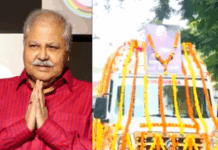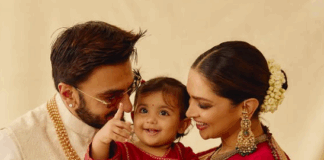Explore the significance of Ahoi Ashtami, tracing its origins from ancient legends to its continued observance in Hindu traditions today.
Mothers, mostly in North India, celebrate Ahoi Ashtami, a Hindu festival, in hopes of their children’s health and longevity. It occurs during the month of Kartik, which is typically in October or November, on the Ashtami (eighth day) of the Krishna Paksha. This event is celebrated for all children but is particularly important for those who have sons.
The celebration honors Ahoi Mata, a manifestation of Goddess Parvati, who is thought to shield kids from bad luck and guarantee their well-being. Mothers keep a rigorous fast (vrat) on this day in remembrance of their children and offer prayers for their longevity and prosperity.

Why Ahoi Ashtami is celebrated?
Legend has it that a mother murdered a baby cub by mistake as she was digging soil. She lamented that her sons would be doomed to the same fate. She prayed to Goddess Ahoi to repent, and she was blessed and her children were spared. Women have been observing Ahoi Ashtami ever since to atone for any unintentional transgressions and to ask for divine protection for their children.
The celebration highlights the strong link between a mother and her child and maternal love and sacrifice. On this day, children are thought to be protected from harm and blessed with prosperity if they fast and pray to Ahoi Mata.
Ahoi Ashtami Celebration
1. Fasting
Mothers observe Nirjala Vrat, a daylong fast without food or water, which starts at sunrise and concludes in the evening when they see the stars. After prayers, those unable to observe a strict fast may have water or fruits.
2. The Puja
An idol or portrait of Ahoi Mata is worshipped in the evening with women typically tracing or drawing Ahoi Mata and her eight sons on a wall. In front of the picture are offerings of grains, candies, and fruits, as well as a kalash, or kettle filled with water.
3. Rituals for Puja
To symbolize blessings for the child’s long life, a thread with seven or eight knots is frequently tied to the thumb. As part of the ceremony, women pray for their children’s welfare and recite the Ahoi Ashtami katha (tale). A diya is lit after special offerings such as milk, water, and jaggery are made.
4. Breaking the Fast and Spotting Stars
As a sign of divine favor, the fast is customarily interrupted upon seeing the stars. After finishing the puja, some people also gaze at the moon before they eat.
5. Charity
As a sign of goodwill and gratitude to Ahoi Mata, mothers frequently provide food and other necessities to Brahmins or the poor.














